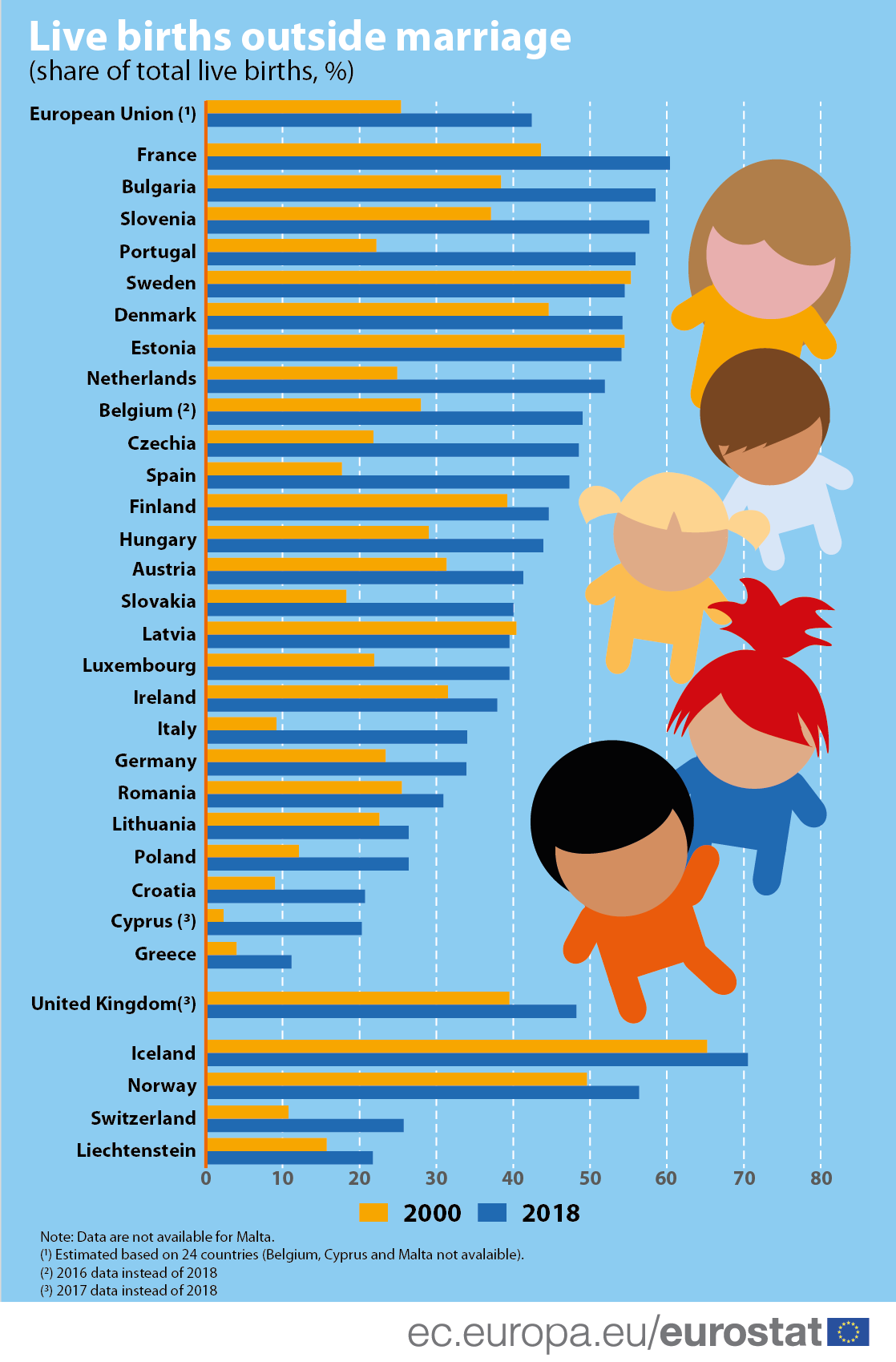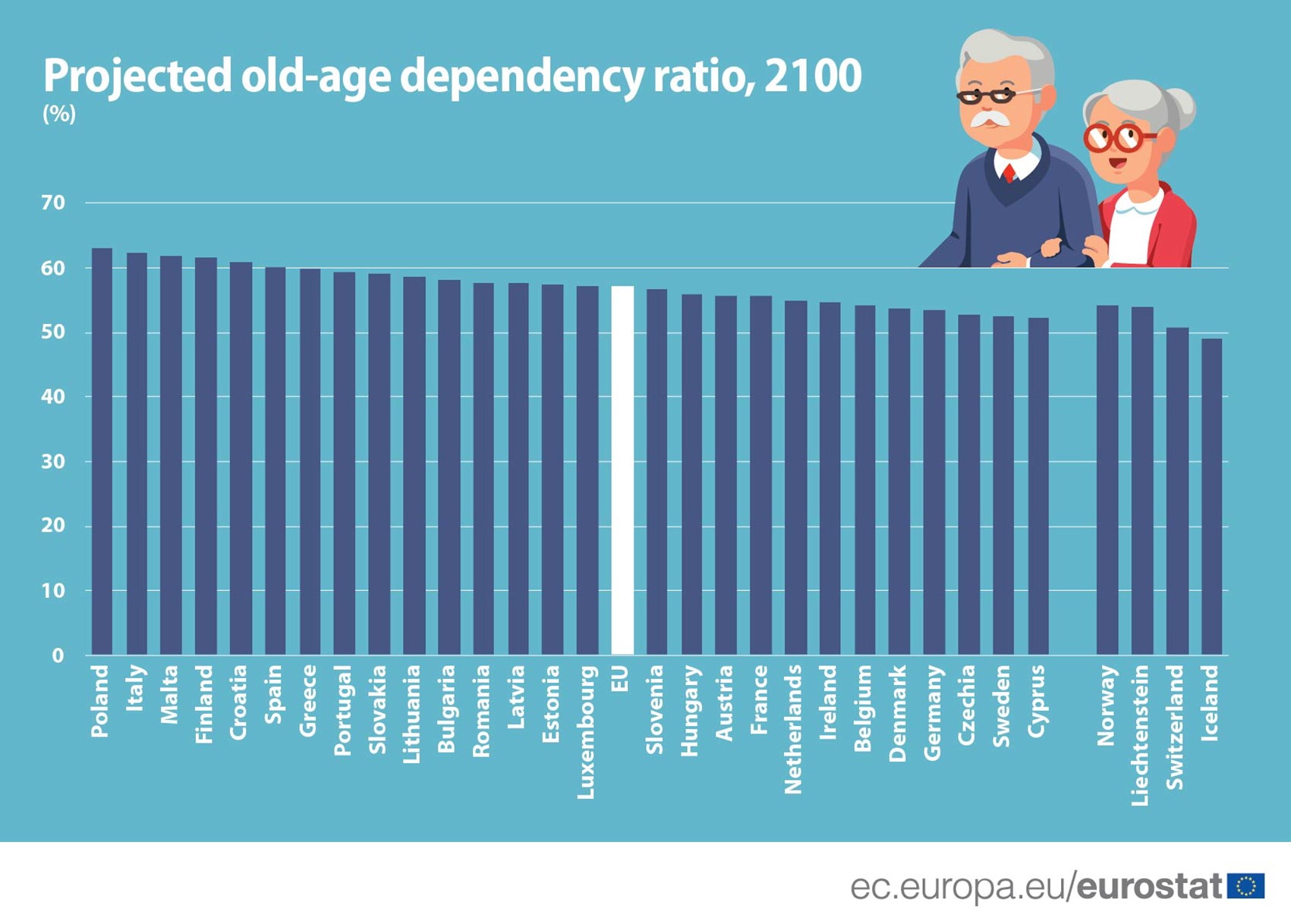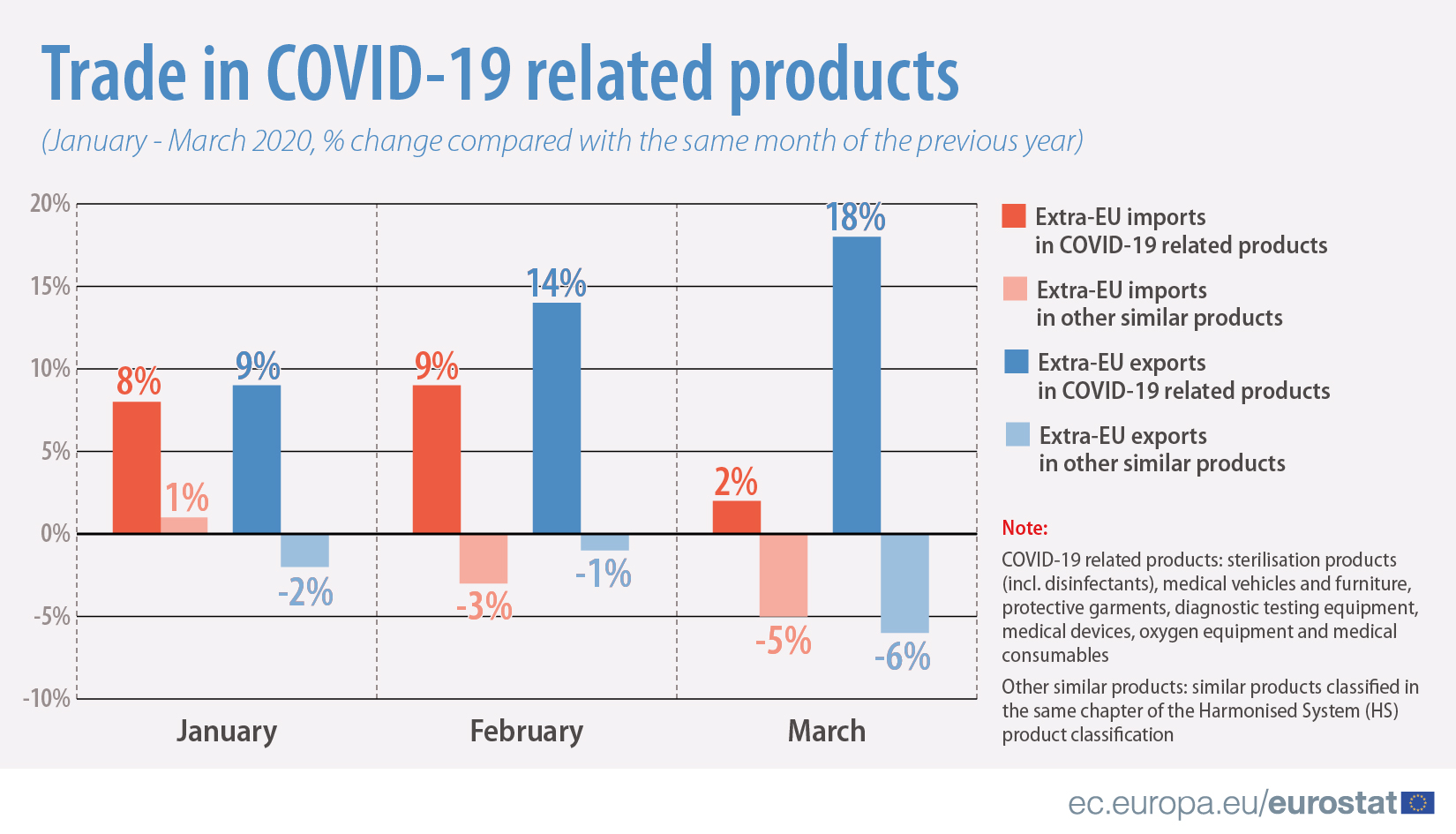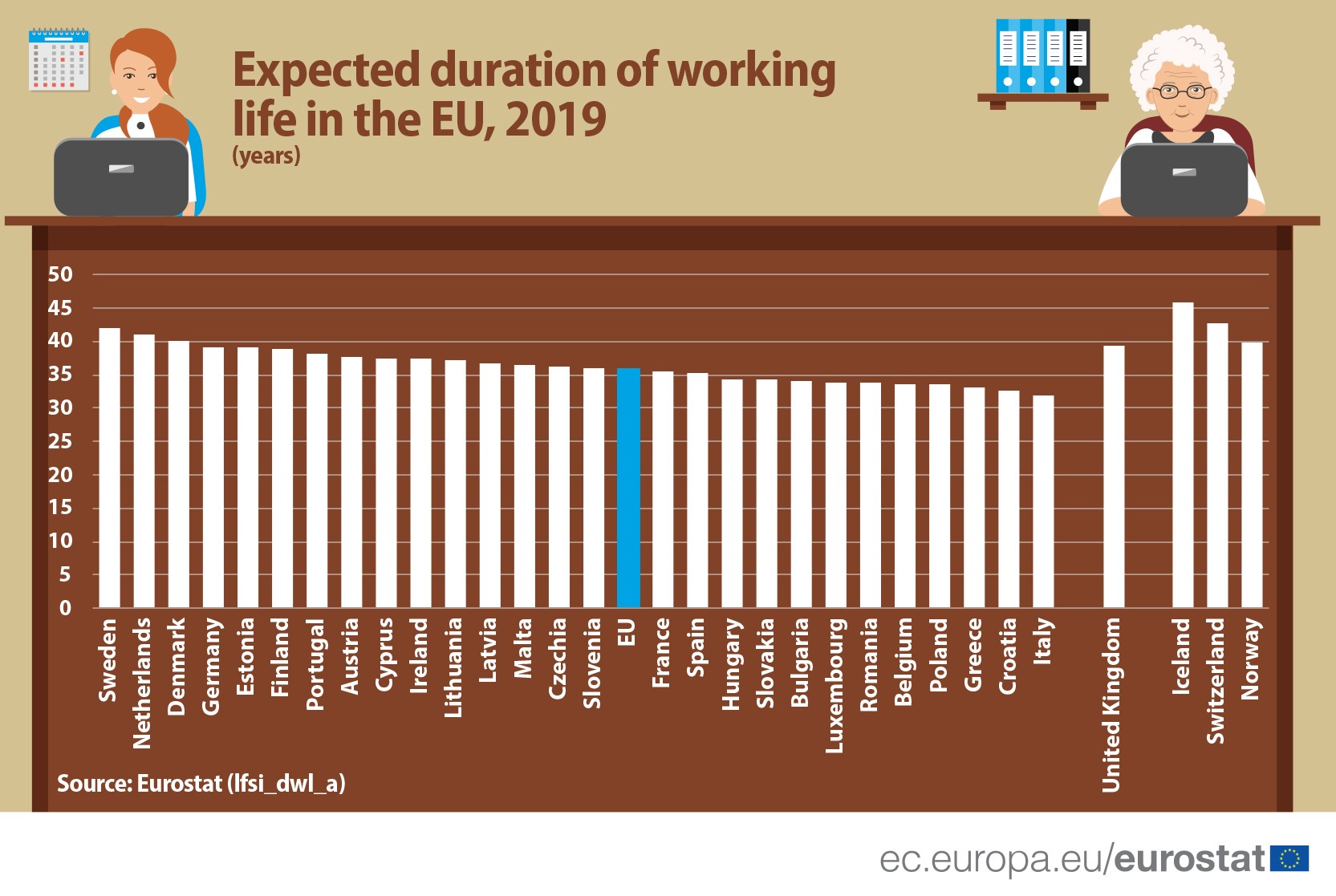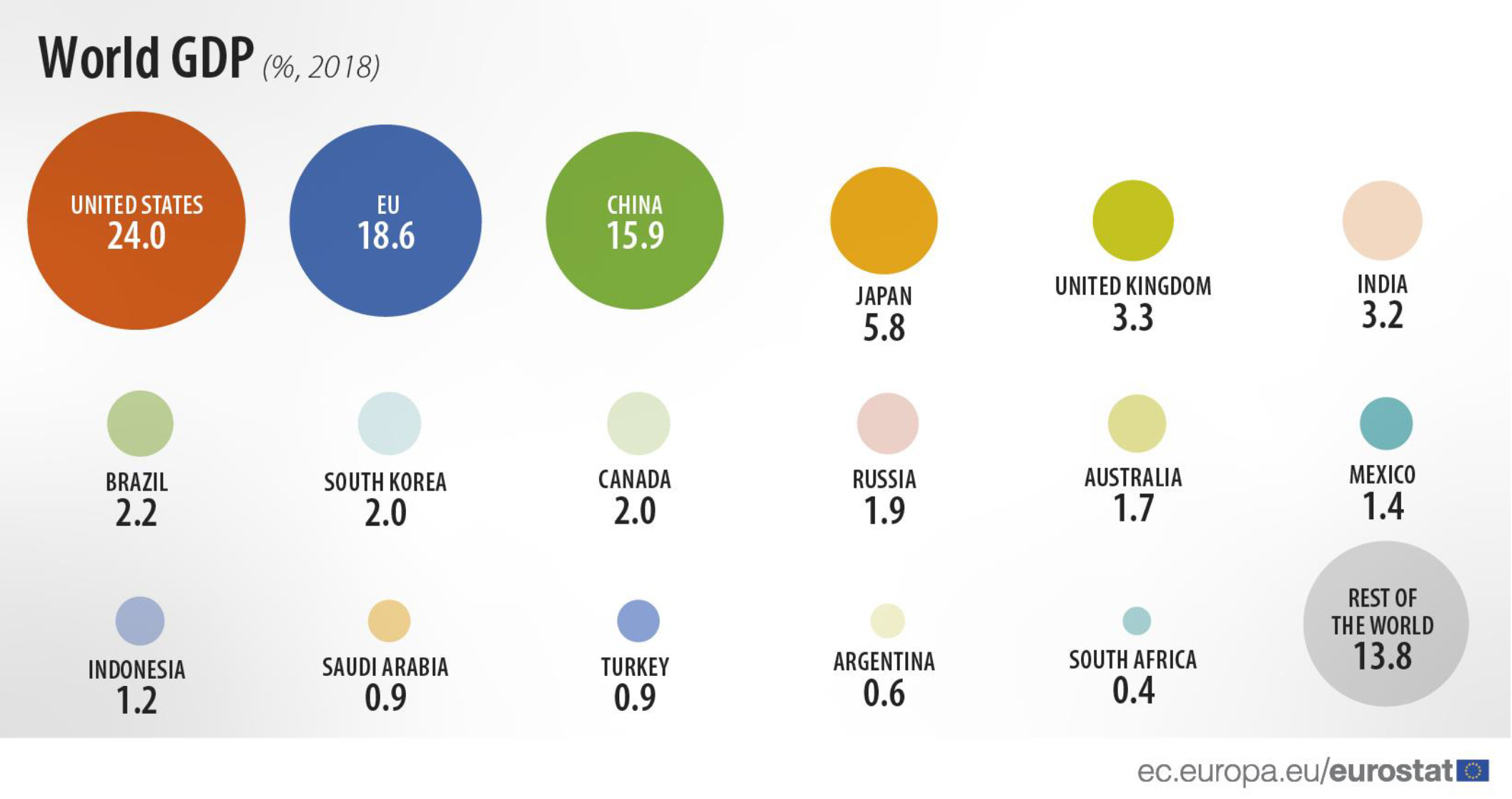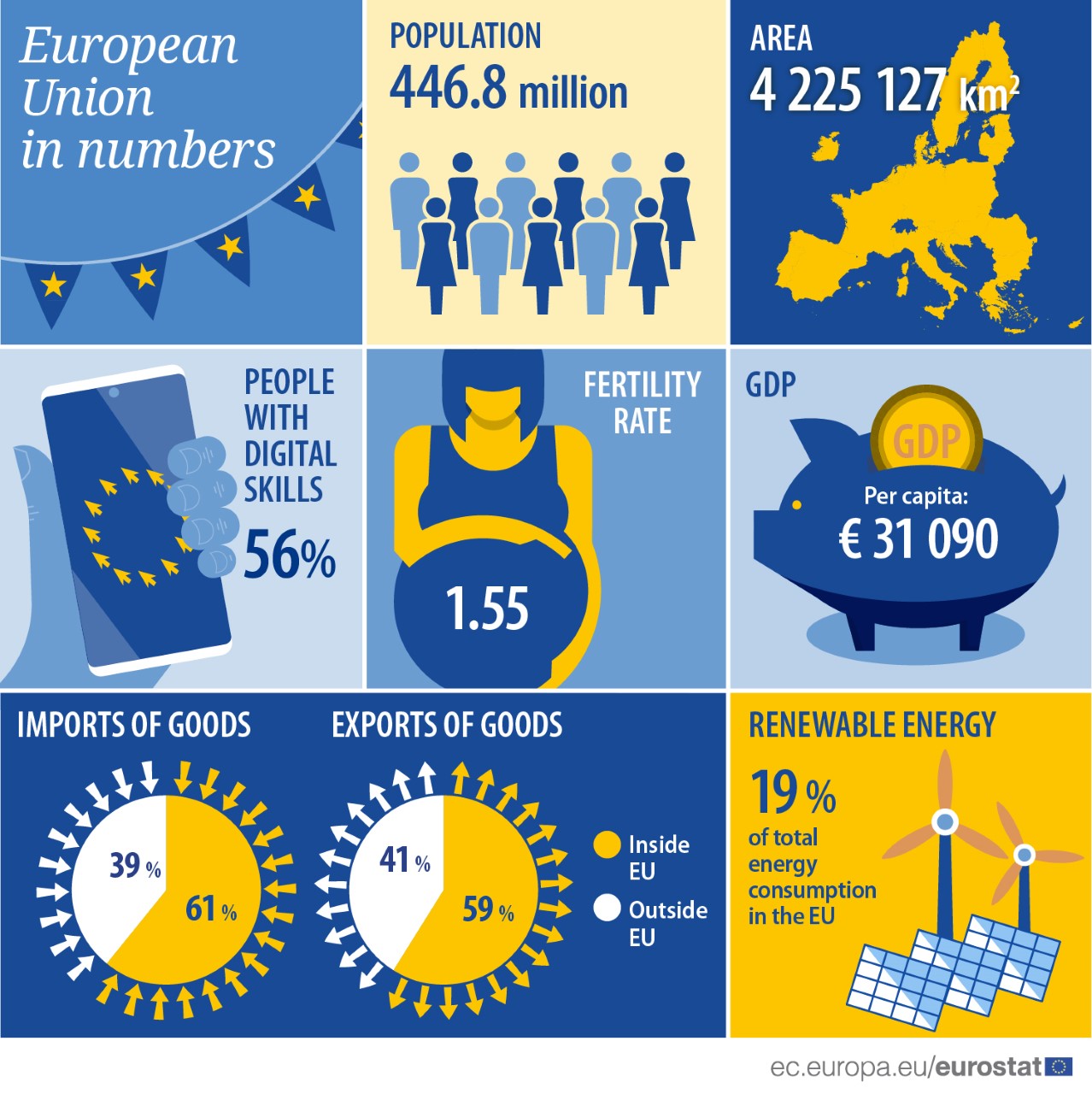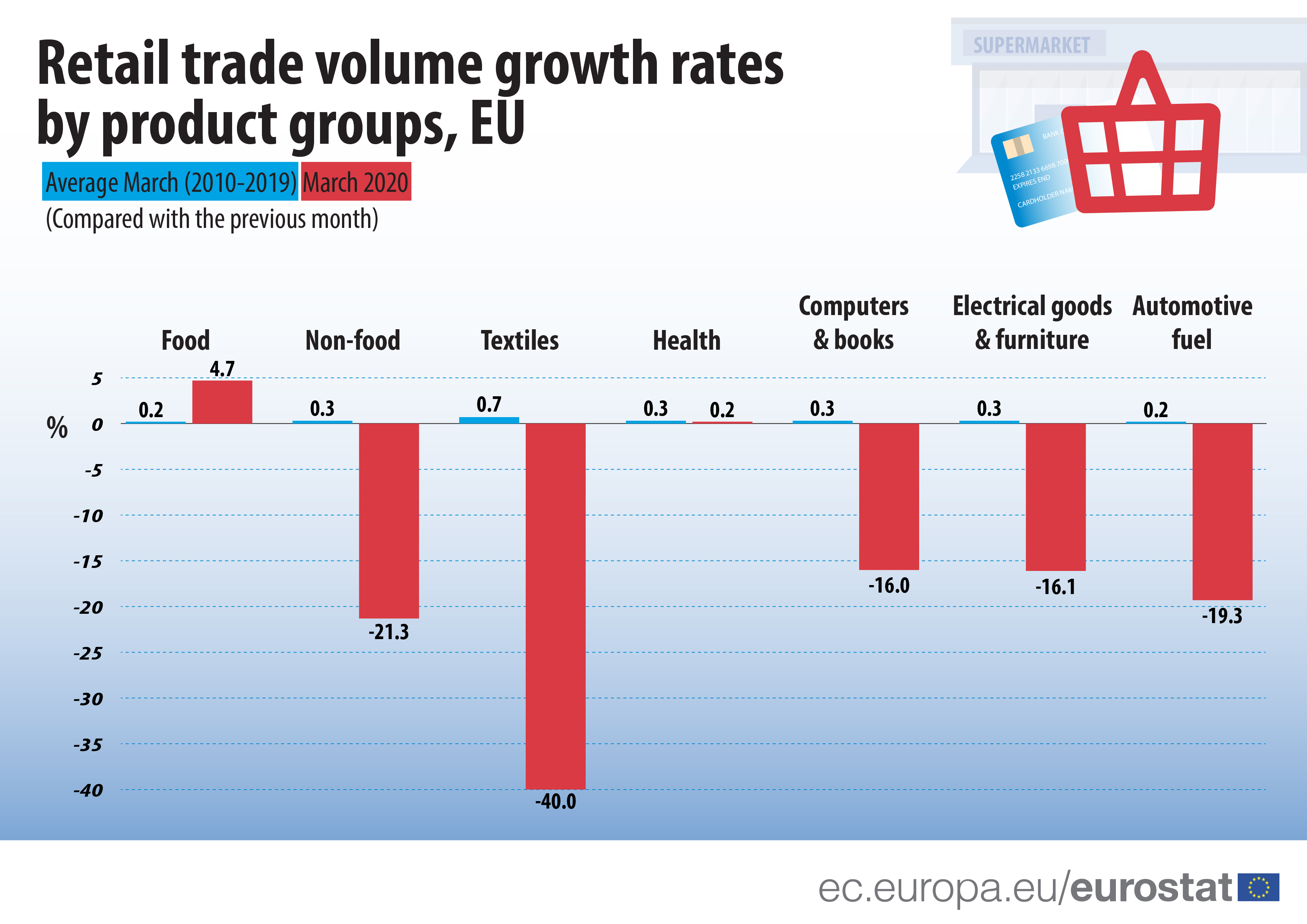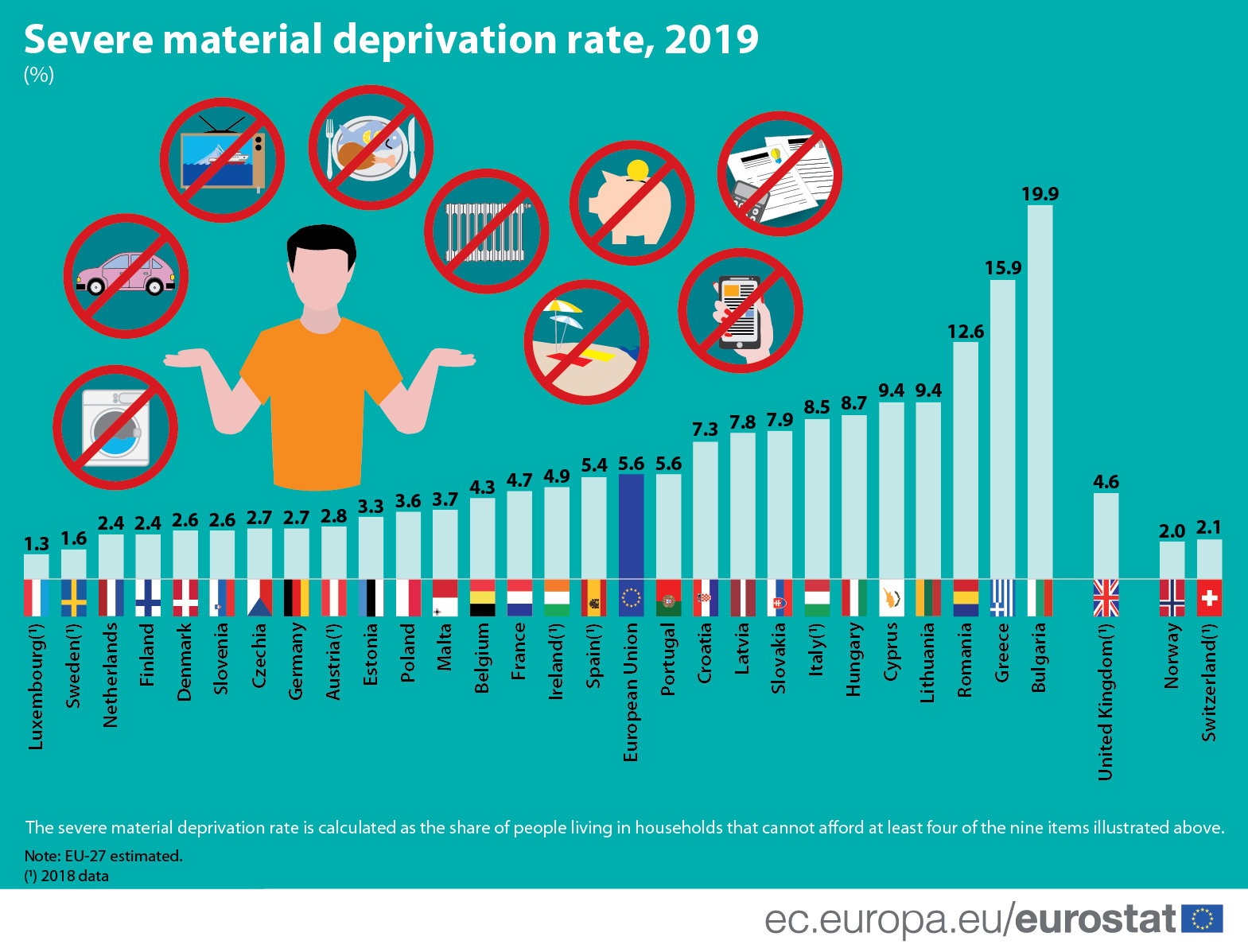The proportion of live births outside marriage in the EU stood at 42% in 2018. This is 17 percentage points above the value in 2000.
Statistics
Under the baseline scenario of the latest population projections issued by Eurostat, the EU’s population will continue to grow older.
In these times of coronavirus pandemic, and due to the social distancing measures in force, people are connecting more often with others via social networks.
In 2019, the expected average duration of working life for the European Union’s (EU) adult population aged 15 years and more was 35.9 years.
While accounting for slightly less than 6% of the world population, the EU generated 18.6% of the world GDP in 2018.
In April 2020, a month marked by COVID-19 containment measures in all countries, the Euro area annual inflation rate was 0.3%, down from 0.7% in March. A year earlier, the rate was 1.7%.
On Europe Day 2020, the EU institutions want to pay tribute through numerous online activities to the many Europeans who, in a spirit of solidarity, are helping the Union get through the coronaviru
To prevent the spread of the COVID-19 pandemic, EU Member States have taken a wide variety of restrictive measures.
In 2019, 5.6% of the population or around 24 million people in the European Union (EU) were severely materially deprived.
